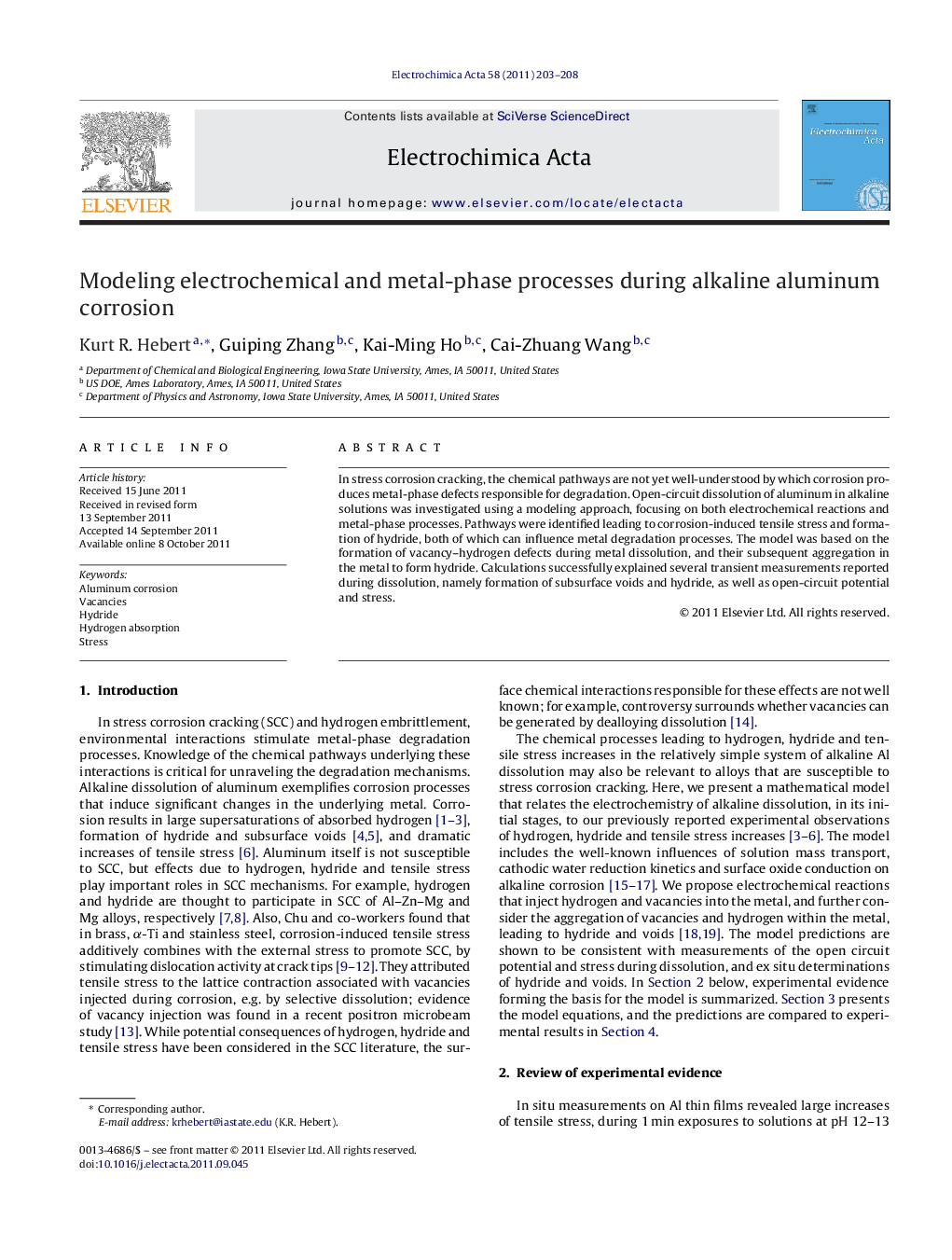| Article ID | Journal | Published Year | Pages | File Type |
|---|---|---|---|---|
| 189711 | Electrochimica Acta | 2011 | 6 Pages |
In stress corrosion cracking, the chemical pathways are not yet well-understood by which corrosion produces metal-phase defects responsible for degradation. Open-circuit dissolution of aluminum in alkaline solutions was investigated using a modeling approach, focusing on both electrochemical reactions and metal-phase processes. Pathways were identified leading to corrosion-induced tensile stress and formation of hydride, both of which can influence metal degradation processes. The model was based on the formation of vacancy–hydrogen defects during metal dissolution, and their subsequent aggregation in the metal to form hydride. Calculations successfully explained several transient measurements reported during dissolution, namely formation of subsurface voids and hydride, as well as open-circuit potential and stress.
► Modeling was used to identify mechanistic pathways through which surface electrochemical interactions during corrosion result in extensive hydrogen absorption, hydride formation, and corrosion-induced tensile stress. These phenomena are generally relevant in metallic degradation processes in many systems. ► It was found that corrosion-induced tensile stress is due to vacancy–hydrogen defects formed during alkaline aluminum corrosion. Hydride is created by aggregation of these defects. ► The model provides a unified explanation of previous experimental observations during alkaline dissolution: electrochemical transients, and measurements of stress, hydrogen absorption, and hydride and void formation in the metal.
